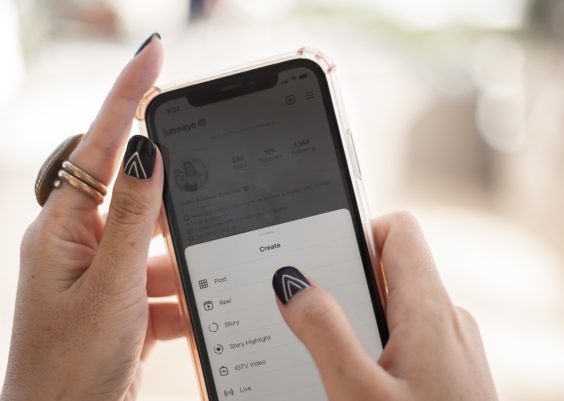Creating a robust social media strategy requires more than just well-timed posts and witty captions—it requires brand consistency. At the heart of any recognizable brand is its logo, a visual representation that fosters trust, recognition, and loyalty. For businesses aiming to enhance their social media presence, building a content calendar around their logo can serve as a powerful tactic to craft a cohesive brand experience across all platforms.
TLDR: A social media calendar centered on your logo helps reinforce brand identity, maintain visual consistency, and streamline content planning. By strategically using your logo in posts, colors, and visual templates, you ensure your brand is instantly recognizable. Consider your posting schedule, audience engagement patterns, and seasonal campaigns when planning content. This approach can turn your logo from a passive brand element into an engaging part of your communication strategy.
Contents
Why Your Logo Matters in Social Media Planning
Your logo is often the first point of interaction someone has with your brand on social media. Whether it’s featured as a profile picture, in visual content, or subtly included in video watermarks, the logo establishes identity. Consistently integrating it into your social media calendar ensures that every post reinforces brand recognition.
When people scroll through their feeds, they’re inundated with content. The more familiar your audience becomes with your logo, the more likely they are to stop engaging with your posts. This familiarity builds trust over time and can contribute to increased engagement rates and user retention.
Step-by-Step Guide to Building a Social Media Calendar Around Your Logo
1. Define Your Brand Identity
Before diving into scheduling posts, it’s important to have a clearly defined brand identity. This includes:
- Logo variations: primary, secondary, watermark, and monochrome versions.
- Brand colors: use your logo’s color scheme to create templates and backgrounds.
- Typography: consistent fonts that match your logo’s style.
These brand elements should inform all your content templates and be easy to access during the content creation process.
2. Create Visual Templates
One of the easiest ways to integrate your logo effectively across your social media calendar is by using branded templates. These ensure that every piece of content—whether it’s a quote graphic, testimonial, or promotional banner—carries your logo in a consistent and unobtrusive way.
Use tools such as Canva, Adobe Express, or Photoshop to create a range of reusable templates that include:
- Quote posts with your logo in the corner
- Product highlights using brand colors and logo overlays
- Event announcements with consistent logo placement

3. Choose Content Themes to Match Your Logo Use
Once the visuals are aligned, move on to content planning with your logo in mind. Create a collection of recurring content themes that allow for repeated and thoughtful logo integration.
Examples include:
- Behind-the-scenes posts featuring branded tees, water bottles, or office signage with your logo.
- Testimonials or user-generated content with branded overlays.
- Tip of the Week posts with a consistent branded graphic.
Assign these thematically across your calendar. For instance, post testimonials every Tuesday and insights every Thursday. Add your logo subtly on every associated post to reinforce branding.
4. Align Your Calendar with Key Campaigns
Plan your content calendar quarterly or monthly and include details on where and when the logo will be featured in campaign visuals such as promotions, product launches, or seasonal events.
Consider the following:
- Use a special edition logo for holidays or awareness months (think rainbow logos for Pride month).
- Integrate the logo into GIFs or Reels, making it part of the dynamic content.
- Create hero campaigns where your logo takes center stage—for example, a challenge or giveaway branded under your logo.
5. Schedule Your Posts
Use tools like Buffer, Hootsuite, or Later to organize and automate your content. Make a note in your calendar for when the logo is featured and how—whether in visuals, profile updates, or video branding.
Typical post types can be scheduled as follows:
- Monday: Motivational quotes in a branded template.
- Wednesday: Product spotlight with logo integration.
- Friday: Behind-the-scenes footage featuring the logo in-office or product packaging.

6. Review and Adapt
Monitor the performance of logo-tied content. Use platform analytics to determine what types of branded visuals get the most engagement. You can adjust logo placement, size, or even frequency of use based on feedback and data.
Ask yourself:
- Do posts with the logo perform better?
- Is there a type of content where the logo stands out visually?
- Are users reposting branded content, expanding your reach?
Using these insights, tweak your social media strategy and redesign templates if necessary. A/B testing with slight adjustments in logo presentation can yield surprising results.
Best Practices for Logo Integration
Regardless of your approach, it’s important to maintain a few key principles when integrating logos into your content:
- Subtlety matters: Don’t let your logo overshadow the content. It should support, not dominate.
- Consistency is key: Varying logo use too much can confuse followers. Establish visual guidelines.
- Responsive sizing: Ensure your logo is visible and legible on both mobile and desktop.
Common Mistakes to Avoid
- Overuse of the logo. Too much branding can come off as spammy or inauthentic.
- Low-quality logo files. Use high-resolution versions to avoid pixelation, especially in videos or stories.
- Ignoring platform differences. Instagram Stories, LinkedIn posts, and Twitter images all display visuals differently. Tailor logo placement accordingly.
Conclusion
A social media calendar structured around your logo isn’t just a branding exercise—it’s a strategic move to unify your content, solidify brand recognition, and create aesthetic cohesion. By designing every piece of content with your logo in mind, you strengthen your brand’s presence across all platforms and keep your audience visually engaged. Think of your logo as not just a symbol, but a storytelling device that, when used thoughtfully, enhances every piece of content.
FAQs
Ideally, your logo should appear subtly on most visual content, like images and videos. However, avoid including it in every single post if it feels forced. Use it strategically to maintain balance.
Can I change my logo colors for holidays or special campaigns?
Yes, many brands create special editions of their logos for seasonal events or awareness months. Just ensure the modified logo still aligns with your overall brand identity.
Popular tools include Canva, Adobe Express, Photoshop, and Figma. Many of these offer templates where you can easily insert your logo and maintain consistent branding.
Is video content good for logo integration?
Absolutely. Watermarks, intro frames, and outro logos are great for branding in video content. Videos also offer animated branding opportunities that enhance engagement.
What’s the biggest mistake to avoid?
Using inconsistent or low-quality logos. Always use high-resolution images and stick to a consistent style, placement, and usage pattern.




